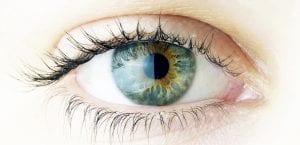
Corneal Conditions
Fuchs’ Dystrophy
Fuchs’ Dystrophy, also known as Fuchs’ Endothelial Dystrophy.
Fuchs’ Dystrophy reduces the number of endothelial cells that make up the inner layer of the cornea.
Fuchs’ endothelial dystrophy, usually affects both eyes and causes a gradual decline in vision due to corneal edema (swelling) and cloudy water clogged cornea. Fuchs’ dystrophy is a progressive corneal disorder, overtime the changes to the corneal cells may interfere with vision. The condition can result in corneal scar tissue, which may have to be removed surgically.
Common Conditions:
- Halos around light
- Glare
- Cloudy Vision
- Sensitivity to light
- Fluctuating vision
Sometimes this disease can be hereditary and appear higher in woman.
Two techniques Dr. Griffin may consider for you are Descemet stripping endothelial keratoplasty (DSEK) and Descemet membrane endothelial keratoplasty (DMEK). Only the back of the cornea is replaced with healthy tissue from a donor.
Most people who have surgery for advanced Fuchs’ dystrophy experience much better vision and can remain symptom-free for years afterward.
Keratoconus
Cornea Disease Keratoconus is a progressive eye disease affecting vision. Keratoconus is characterized by a thinning and cone shape protrusion or abnormal bulging of the central cornea.
It is believed that genetics and the environment play a role in keratoconus. Depending on the rate of progression and severity, keratoconus can have mild to severe effects on your vision. In some people keratoconus progresses until surgical treatment is required and in others it stops progressing on its own.
Corneal topography has facilitated in the diagnosis of keratoconus. Moreover, helping establish the diagnosis earlier, follow progression accurately and differentiate keratoconus from other conditions.
Common Symptoms:
- Light sensitivity
- Difficultly driving at night
- A halo around lights and ghosting (especially at night)
- Severe Eye strain
- Headaches/ general eye pain
- Excessive eye rubbing
Treatments:
- Rigid Gas Permeable Contact Lenses
- Intacs™ which are small plastic rings are inserted into the mid layer of the cornea
- Corneal Crosslinking
- Corneal Surgery in about 15% of Keratoconus Patients

